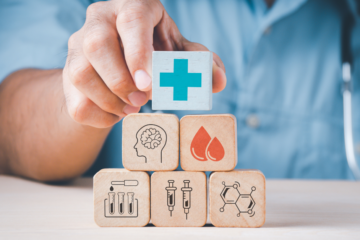The healthcare industry is experiencing a significant transformation driven by new technologies, improved patient care models, and evolving patient expectations. As we approach 2025, healthcare will continue to evolve, with innovations in technology, data management, and personalized treatments changing the way we experience healthcare services. In this article, we explore the key trends and advancements that are set to shape the future of healthcare.
1. Telemedicine and Virtual Healthcare
Telemedicine has exploded in popularity, especially in the wake of the COVID-19 pandemic, as it offers a convenient and safe way for patients to consult healthcare providers remotely. By 2025, telemedicine will be even more widely adopted, with enhanced capabilities such as AI-powered diagnostic tools, real-time health monitoring, and virtual health assistants.
Telehealth services will expand beyond basic consultations, with remote surgeries, virtual therapy, and health consultations available on-demand. Patients will also be able to access a broader range of specialists and medical professionals from the comfort of their homes, leading to reduced wait times, increased access to care, and lower healthcare costs.
Moreover, wearable health devices and integrated apps will allow patients and doctors to track vital signs, symptoms, and chronic conditions, making remote healthcare more personalized and data-driven.
2. AI and Machine Learning in Healthcare
Artificial Intelligence (AI) and Machine Learning (ML) are already making an impact on healthcare, but by 2025, these technologies will be deeply integrated into medical practices. AI will assist doctors in diagnosing diseases, predicting patient outcomes, and personalizing treatment plans. From medical imaging to genetic analysis, AI will improve diagnostic accuracy, reducing human error and speeding up the diagnostic process.
For instance, AI will be used to analyze medical images such as X-rays, CT scans, and MRIs to detect abnormalities like tumors, fractures, or cardiovascular conditions. Additionally, AI-powered algorithms will analyze patient data to suggest the most effective treatments based on individual health histories.
Machine learning will also play a vital role in drug discovery, helping researchers identify promising compounds and streamline the process of developing new treatments.
3. Personalized Medicine and Genomic Healthcare
Personalized medicine is one of the most exciting developments in healthcare, and by 2025, it will become more commonplace. This approach tailors medical treatments to individual patients based on their genetic makeup, lifestyle, and environmental factors, ensuring that treatments are more effective and have fewer side effects.
Advancements in genomic sequencing and CRISPR gene-editing technology will allow doctors to identify genetic predispositions to certain diseases and conditions. Personalized treatments, from targeted cancer therapies to tailored drug regimens, will become the standard for many medical conditions, allowing for more effective and precise care.
Furthermore, wearable devices that monitor health data such as heart rate, blood pressure, and blood sugar levels will contribute to the growing field of precision medicine by providing continuous insights into a patient’s condition and treatment response.
4. Healthcare Data and Interoperability
As the healthcare system becomes increasingly digital, managing and sharing patient data will be a critical factor in improving care quality and efficiency. By 2025, healthcare organizations will need to embrace data interoperability—making it easier to share health records across different systems and institutions while maintaining data privacy and security.
Cloud-based platforms and blockchain technology will help streamline data sharing between healthcare providers, ensuring that patient records are easily accessible and up-to-date. This will reduce redundancy in medical tests, improve diagnosis accuracy, and lead to better patient outcomes by ensuring that all providers have access to the most recent information.
AI will also be used to analyze large datasets, identifying patterns and insights that can improve public health strategies and treatment protocols. By harnessing the power of big data, healthcare providers will be able to predict health trends, prevent diseases, and optimize resources.
5. Robotics and Automation in Healthcare
Robotics and automation will significantly transform surgery, patient care, and hospital operations by 2025. Robotic surgery systems, like the da Vinci Surgical System, will become even more advanced, allowing for minimally invasive procedures with greater precision, smaller incisions, faster recovery times, and fewer complications.
Additionally, robots will be used to assist healthcare workers with tasks such as delivering medications, transporting supplies, and disinfecting patient rooms, reducing workloads and improving hospital efficiency.
In nursing homes and assisted living facilities, robots will provide companionship and assistance to elderly patients, helping with tasks like mobility, meal delivery, and medication reminders, enabling human staff to focus on more complex care needs.
6. Wearable Health Technology and Remote Monitoring
Wearable health devices are already widely used to monitor steps, calories, and sleep, but by 2025, they will be much more advanced, offering real-time insights into various aspects of health. Smartwatches and fitness trackers will monitor heart rate, blood oxygen levels, blood pressure, and even glucose levels for diabetic patients.
Remote patient monitoring systems will allow doctors to track chronic conditions, such as diabetes, hypertension, and heart disease, remotely. Patients will be able to upload health data directly to their healthcare provider’s systems, ensuring that any fluctuations or changes in their health are detected early and managed proactively.
By 2025, healthcare will become even more patient-centered, with wearables and remote monitoring systems empowering patients to take an active role in managing their health and providing doctors with continuous insights to make informed decisions.
7. 3D Printing in Healthcare
3D printing technology will play an increasingly important role in healthcare by 2025. Medical professionals will be able to print personalized prosthetics, implants, and even organs that are custom-designed for individual patients. This will allow for better fit, comfort, and functionality for patients, especially in orthopedics and dental care.
In addition to prosthetics, 3D printing will enable surgeons to print models of patients’ organs based on their medical scans. These 3D models will help doctors plan complex surgeries, allowing them to practice procedures before performing them on the patient.
Researchers will also continue to explore the use of 3D printing to create tissue and organs for transplants, potentially solving the shortage of donor organs and reducing the need for long waiting times.
8. Mental Health Technology and AI Therapy
Mental health is an area where innovation is desperately needed, and by 2025, we will see more technology-driven solutions to support mental well-being. AI-powered therapy applications and mental health chatbots will become more advanced, offering personalized support and counseling to individuals dealing with anxiety, depression, and other mental health conditions.
These tools will use natural language processing (NLP) to engage with patients and help them work through their feelings, providing cognitive behavioral therapy (CBT) and mindfulness exercises. For individuals in underserved areas or those who cannot afford traditional therapy, AI mental health tools will provide a valuable and accessible option.
Additionally, wearable devices will be developed to track mental health indicators such as stress, sleep patterns, and mood, providing users with real-time feedback and helping healthcare professionals monitor their patients’ mental well-being remotely.
9. Global Health and Disease Prevention
In the coming years, AI, big data, and mobile technology will play a pivotal role in global health, particularly in preventing and managing epidemics and pandemics. By 2025, health authorities and organizations will be able to use predictive analytics and AI to track the spread of infectious diseases in real time, enabling faster and more targeted responses.
Mobile health apps will provide global populations with immediate access to vital health information, preventive measures, and real-time health updates. The use of digital health tools will help improve disease surveillance, vaccination rates, and access to healthcare services in developing countries.
Conclusion: The Healthcare Revolution by 2025
The healthcare landscape is set for a major transformation by 2025, driven by advancements in technology and a shift toward more personalized, patient-centered care. From AI-powered diagnostics and telemedicine to wearable devices and 3D-printed prosthetics, healthcare innovations will continue to enhance outcomes, improve efficiency, and reduce costs.
By embracing these trends, the healthcare industry will be better equipped to address the evolving needs of patients, healthcare providers, and global health systems. As we look toward 2025, the future of healthcare promises to be more connected, data-driven, and accessible than ever before.



0 Comments